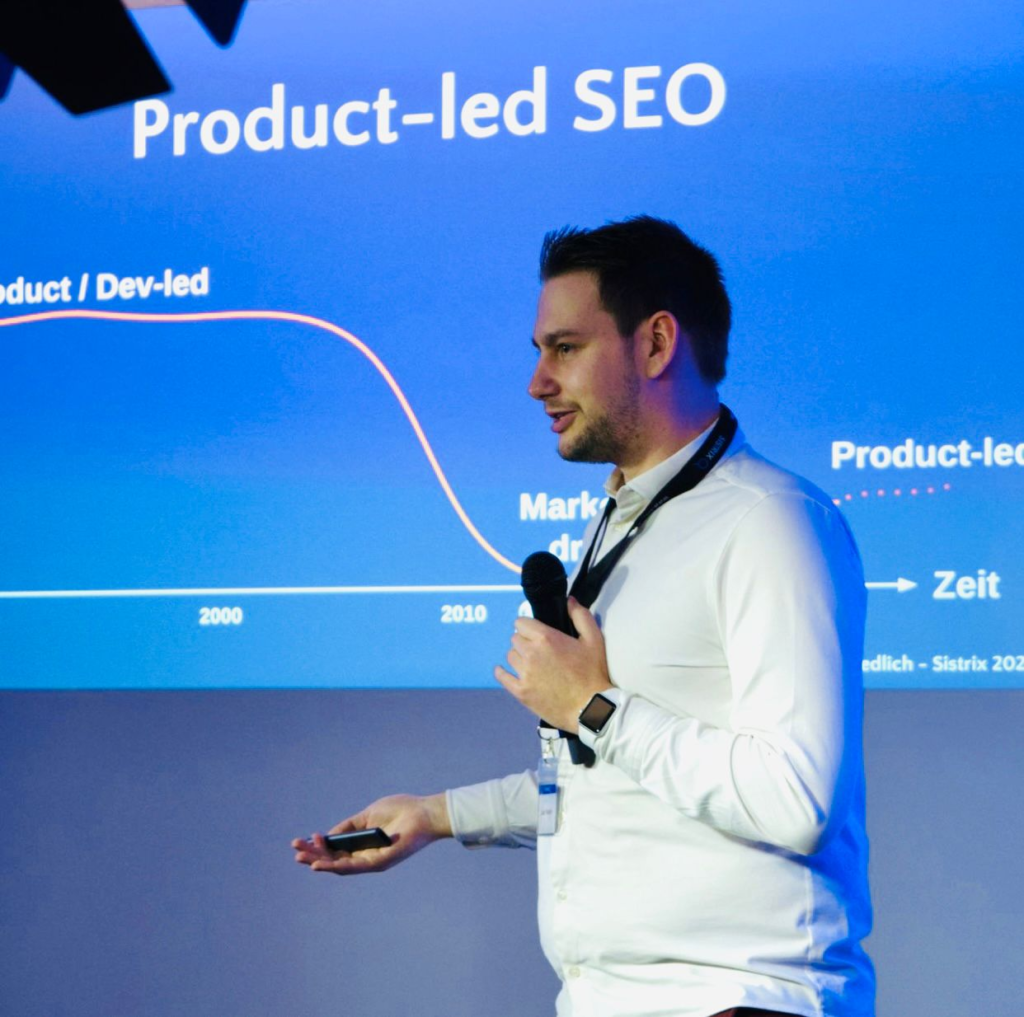Product-led SEO is a customer-centric approach to search engine optimization that focuses on creating high-quality, useful content and resources related to a company’s products or services.
This approach is designed to provide value to users and demonstrate the company’s expertise in its field, helping to drive traffic and conversions from search results. The goal of product-led SEO is to create a positive user experience and build trust with potential customers by providing them with the information and resources they need to make informed decisions about the products or services being offered. By prioritizing the needs and interests of customers, product-led SEO helps companies attract and retain loyal customers and establish themselves as leaders in their industry.
Since there’s no recipe to improving user experience, we’re makign use of Hypothesis-driven development. It’s a method of product development that involves testing and validating assumptions or predictions about how a product or feature will perform.
This approach involves formulating hypotheses about how a product or feature will solve a specific problem or meet a user need, and then designing experiments or prototypes to test these hypotheses. The results of these tests are used to refine or adjust the product or feature, and the process is repeated until the desired outcomes are achieved. By focusing on testing and validating assumptions about the product or feature, hypothesis-driven development helps companies make informed decisions about product development and ensure that they are building solutions that meet the needs and expectations of their users.
How to actually practice Product led SEO?
Product led SEO works best when the website supplies a way to scale through a database.
A website can be driven through templates that scale with database values by using a dynamic programming language such as PHP or Python, in combination with a database management system such as MySQL.
Here’s how it works:
- First, the website developer creates templates for the different pages of the website. These templates contain placeholders for the dynamic content that will be pulled from the database.
- The developer then writes code in the programming language of their choice (e.g. PHP) to connect to the database and retrieve the necessary data.
- When a user requests a page on the website, the server executes the code, retrieves the relevant data from the database, and populates the placeholders in the template with the dynamic content.
- The completed template is then sent back to the user’s browser, where it is rendered as a fully functional web page.
By using this approach, the website can scale with the size of the database and the amount of data it contains. As the database grows and changes, the website will automatically update to reflect the new content. This makes it easy to maintain and update the website, as the developer only needs to update the templates and code, rather than manually modifying each page of the site.
How can a product-led approach to SEO help a company’s website rank higher in search results?
One way a product-led approach to SEO can help a company’s website rank higher in search results is by focusing on creating high-quality, useful content that is relevant to the products or services the company offers. This can include creating detailed product descriptions, reviews, and other resources that provide value to users and demonstrate the company’s expertise in its field. This type of content can help the website rank higher in search results for relevant keywords and phrases, increasing visibility and driving traffic to the site.
What are some best practices for optimizing a product-led website for SEO?
Some best practices for optimizing a product-led website for SEO include:
- Conducting keyword research to identify the most relevant and popular keywords and phrases to target in your content
- Creating unique, informative, and engaging product descriptions that include targeted keywords
- Optimizing product images and videos with descriptive, keyword-rich file names and alt tags
- Utilizing header tags (H1, H2, etc.) to structure and organize content and make it easier for search engines to understand
- Creating and optimizing product-specific landing pages to provide a focused and relevant user experience
- Utilizing schema markup to help search engines understand the content and context of your products and services
How can a company measure the success of its product-led SEO efforts?
There are a few key metrics that a company can use to measure the success of its product-led SEO efforts:
- Traffic: Track the number of visitors to the website and specific product pages over time to see if there has been an increase in traffic.
- Rankings: Monitor the ranking of the website and specific product pages for targeted keywords and phrases to see if there has been an improvement in visibility and search engine results.
- Conversions: Track the number of conversions (such as sales or leads) generated from product pages to see if the SEO efforts are resulting in increased sales or other desired actions.
- Engagement: Measure the engagement of users on product pages, such as the amount of time they spend on the page and the number of page views per visit, to see if the content is resonating with users.
Measuring Customer Experience
But how would once measure good customer experience? There are several metrics that can help better understand and measure user experience on your website. Here are a few examples:
Bounce rate: This is the percentage of users who leave your website after viewing only one page. A high bounce rate may indicate that users are not finding what they are looking for or that the content on your site is not relevant to them. You can use tools like Google Analytics to track your bounce rate. You can also split this into a quick vs. long bounce which helps to better read the metric (a logn bounce might not be a bad signal as it might just indicate that the searcher found the information that they were looking for.
Conversion rate: This is the percentage of users who take a desired action on your website, such as filling out a form or making a purchase. A high conversion rate indicates that users are finding your site easy to use and are able to easily complete the actions you want them to take. You can use tools like Google Analytics to track your conversion rate.
User feedback: Another way to improve user experience is to ask users for their feedback directly. You can do this through surveys, focus groups, or by collecting user reviews. This can help you identify areas for improvement and make changes based on the needs and preferences of your users.
Page load time: This is the amount of time it takes for a page on your website to fully load. A slow page load time can be frustrating for users and may cause them to leave your site. You can use tools like Pingdom, GTmetrix or the Lighthouse reports (also available in the Google Search Console) to measure your page load time and identify areas for improvement.
Time on site: This is a measure of how long a user stays on your website. A higher time on site indicates that users are finding your site engaging and useful. You can measure this by tracking the time from when a user first lands on your site until they leave or close the tab. I would like to add that this is only relevant for certain types of websites. If you’re an ecommerce company, time on site might not be a good metric to increase since a good experience could be considered if the customer found a product quick and went through the purchase funnel.
Summary
In Summary, Product led SEO means to keep the user at the absolute focus of your work. The best way of providing good customer experience is through a hypothesis framework. Using build-measure-learn will improve the experience of the users step by step. A good user experience has to be measured in order to improve it. Metrics like bounce rate, conversion rate, time on site and page load time provide a basic way of understanding the experience of users on your website. The best types of websites that can profit from this type of optimisation strategy are those, that can scale through a database. Example: Dogsitter in {city} (where {city} is a variable that fills in city names based on a city name database.


